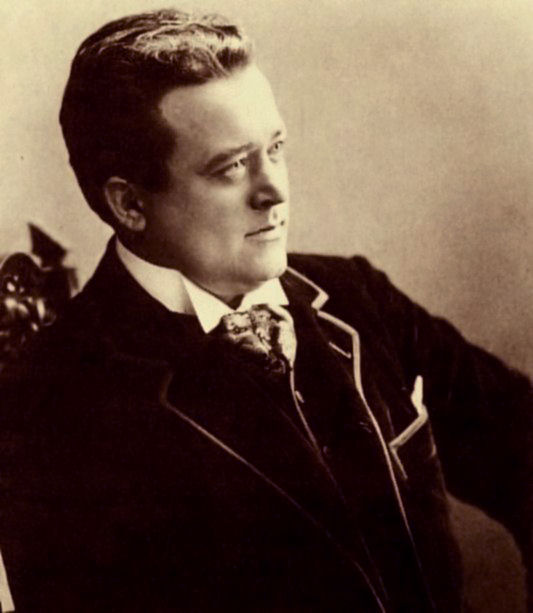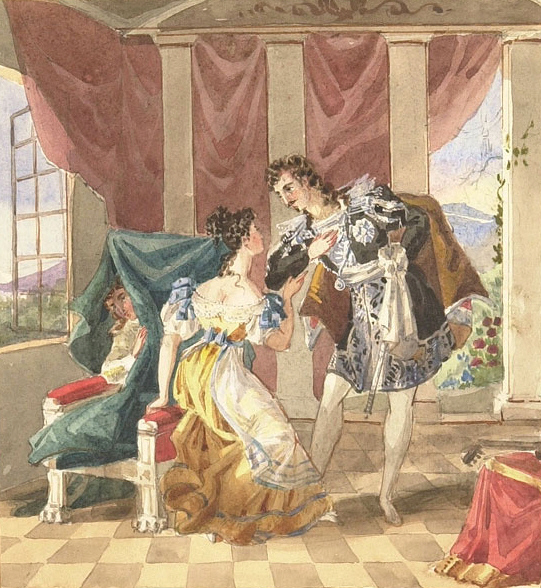|
Helena Tattermuschová
Helena Tattermuschová (28 January 1933 – 6 July 2025) was a Czech lyric coloratura soprano who made an international career. Based at the Prague National Theatre from 1956 to 1991, she appeared chiefly in Mozart roles and Czech operas, such as the title role of Janáček's ''The Cunning Little Vixen'', Terinka in Dvořák's ''The Jacobin'', and Blaženka in Smetana's '' The Secret''. Early life Tattermuschová was born in Prague on 28 January 1933. She grew up in a large working-class family in the Libeň district of Prague. She received her earliest vocal training from her school choirmaster, Václav Matoušek. Upon finishing municipal school, she studied vocal performance with Vlasta Linhartová at the Academy of Music in Prague from 1948 to 1953. She then studied at the Music and Dance Faculty of the Academy of Performing Arts in Prague with Jaromíra Tomášková from 1953 to 1954. During her studies, she performed in the University Art Ensemble of Charles University from ... [...More Info...] [...Related Items...] OR: [Wikipedia] [Google] [Baidu] |
Prague
Prague ( ; ) is the capital and List of cities and towns in the Czech Republic, largest city of the Czech Republic and the historical capital of Bohemia. Prague, located on the Vltava River, has a population of about 1.4 million, while its Prague metropolitan area, metropolitan area is home to approximately 2.3 million people. Prague is a historical city with Romanesque architecture, Romanesque, Czech Gothic architecture, Gothic, Czech Renaissance architecture, Renaissance and Czech Baroque architecture, Baroque architecture. It was the capital of the Kingdom of Bohemia and residence of several Holy Roman Emperors, most notably Charles IV, Holy Roman Emperor, Charles IV (r. 1346–1378) and Rudolf II, Holy Roman Emperor, Rudolf II (r. 1575–1611). It was an important city to the Habsburg monarchy and Austria-Hungary. The city played major roles in the Bohemian Reformation, Bohemian and the Protestant Reformations, the Thirty Years' War and in 20th-century history a ... [...More Info...] [...Related Items...] OR: [Wikipedia] [Google] [Baidu] |
Karel Burian
Karel Burian (also Carl Burrian) (12 January 1870 – 25 September 1924) was a Czech operatic tenor who had an active international career spanning the 1890s to the 1920s. A Heldentenor, Burian earned acclaim in Europe and America for his powerful performances of the heaviest Wagnerian roles. His voice is preserved on numerous recordings made for Pathé Records, the Gramophone Company, the Gramophone & Typewriter Company (and its successor HMV) and the Victor Recording Company. Shawe-Taylor, Desmond (2008)"">urrian, Carl">"Burian Karel [Burrian, Carl/nowiki>"in Macy, Laura (ed.) ''The Grove Book of Opera Singers'', p. 64. Oxford University Press. Biography Born in Rousínov (now part of Slabce) near Rakovník, Burian was the older brother of operatic baritone Emil Burian and the uncle of composer Emil František Burian. Both brothers studied singing under in Prague. Inititially Burian had intended to become a lawyer and had attended Prague University for a year in pursuit of thi ... [...More Info...] [...Related Items...] OR: [Wikipedia] [Google] [Baidu] |
Il Barbiere Di Siviglia
''The Barber of Seville, or The Useless Precaution'' ( ) is an ''opera buffa'' (comic opera) in two acts composed by Gioachino Rossini with an Italian libretto by Cesare Sterbini. The libretto was based on Pierre Beaumarchais's French comedy ''The Barber of Seville'' (1775). The premiere of Rossini's opera (under the title ''Almaviva, o sia L'inutile precauzione'') took place on 20 February 1816 at the Teatro Argentina, Rome, with designs by Angelo Toselli. Rossini's ''Barber of Seville'' is considered to be one of the greatest masterpieces of comedy within music, and has been described as the opera buffa of all "opere buffe". After two centuries, it remains a popular work. Composition history Rossini's opera recounts the events of the first of the three plays by French playwright Pierre Beaumarchais that revolve around the clever and enterprising character named Figaro, the barber of the title. Mozart's opera ''The Marriage of Figaro,'' composed 30 years earlier in 1786, i ... [...More Info...] [...Related Items...] OR: [Wikipedia] [Google] [Baidu] |
Le Nozze Di Figaro
''The Marriage of Figaro'' (, ), K. 492, is a ''commedia per musica'' (opera buffa) in four acts composed in 1786 by Wolfgang Amadeus Mozart, with an Italian libretto written by Lorenzo Da Ponte. It premiered at the Burgtheater in Vienna on 1 May 1786. The opera's libretto is based on the 1784 stage comedy by Pierre Beaumarchais, '' La folle journée, ou le Mariage de Figaro'' ("The Mad Day, or The Marriage of Figaro"). It tells how the servants Figaro and Susanna succeed in getting married, foiling the efforts of their philandering employer Count Almaviva to seduce Susanna and teaching him a lesson in fidelity. Considered one of the greatest operas ever written, it is a cornerstone of the repertoire and appears consistently among the top ten in the Operabase list of most frequently performed operas. In 2017, BBC News Magazine asked 172 opera singers to vote for the best operas ever written. ''The Marriage of Figaro'' came in first out of the 20 operas featured, with th ... [...More Info...] [...Related Items...] OR: [Wikipedia] [Google] [Baidu] |
Don Giovanni
''Don Giovanni'' (; K. 527; full title: , literally ''The Rake Punished, or Don Giovanni'') is an opera in two acts with music by Wolfgang Amadeus Mozart to an Italian libretto by Lorenzo Da Ponte. Its subject is a centuries-old Spanish legend about a libertine as told by playwright Tirso de Molina in his 1630 play '' El burlador de Sevilla y convidado de piedra''. It is a ''dramma giocoso'' blending comedy, melodrama and supernatural elements (although the composer entered it into his catalogue simply as ''opera buffa''). It was premiered by the Prague Italian opera at the National Theatre (of Bohemia), now called the Estates Theatre, on 29 October 1787. ''Don Giovanni'' is regarded as one of the greatest operas of all time and has proved a fruitful subject for commentary in its own right; critic Fiona Maddocks has described it as one of Mozart's "trio of masterpieces with librettos by Da Ponte". Composition and premiere The opera was commissioned after the success of ... [...More Info...] [...Related Items...] OR: [Wikipedia] [Google] [Baidu] |
Die Zauberflöte
''The Magic Flute'' (, ), K. 620, is an opera in two acts by Wolfgang Amadeus Mozart to a German libretto by Emanuel Schikaneder. It is a ''Singspiel'', a popular form that included both singing and spoken dialogue. The work premiered on 30 September 1791 at Schikaneder's theatre, the Freihaus-Theater auf der Wieden in Vienna, just two months before Mozart's death. It was Mozart's last opera. It was an outstanding success from its first performances, and remains a staple of the opera repertory. In the opera the Queen of the Night persuades Prince Tamino to rescue her daughter Pamina from captivity under the high priest Sarastro; instead, he learns the high ideals of Sarastro's community and seeks to join it. Separately, then together, Tamino and Pamina undergo severe trials of initiation, which end in triumph, with the Queen and her cohorts vanquished. The earthy Papageno, who accompanies Tamino on his quest, fails the trials completely but is rewarded anyway with the ... [...More Info...] [...Related Items...] OR: [Wikipedia] [Google] [Baidu] |
Die Entführung Aus Dem Serail
' () (Köchel catalogue, K. 384; ''The Abduction from the Seraglio''; also known as ') is a singspiel in three acts by Wolfgang Amadeus Mozart. The German libretto is by Gottlieb Stephanie, based on Christoph Friedrich Bretzner's . The plot concerns the attempt of the hero Belmonte, assisted by his servant Pedrillo, to rescue his beloved Constanze from the seraglio of Pasha Selim. The work premiered on 16 July 1782 at the Vienna Burgtheater, with the composer conducting. Origins The opera loosely refers to the practice of the North African Barbary corsairs, who operated primarily in the western Mediterranean, of hijacking ships belonging to Christian states. Under the pretext of jihad, the ship and cargo were sold or returned only after a ransom was paid. The actual goal, however, was the kidnapping of crew and passengers, to extort ransom money or to sell them into slavery. It was also common to force affected seafaring nations of non-Muslim faith to pay protection money or tribut ... [...More Info...] [...Related Items...] OR: [Wikipedia] [Google] [Baidu] |
The Brandenburgers In Bohemia
''The Brandenburgers in Bohemia'' () is a three-act opera, the first by Bedřich Smetana. The Czech libretto was written by Karel Sabina, and is based on events from Czech history. The work was composed in the years 1862–1863. Smetana and Sabina wrote the opera at a time of great Czech patriotism, with the pending opening of a new theatre for production of Czech operas in Prague. The opera received its first performance at the Provisional Theatre (or the "Interim Theatre"), Prague, on 5 January 1866, and the first performance was a success. The first UK performances were in April 1978 by Hammersmith Municipal Opera. The first professional production in the UK, conducted by Vilém Tauský, was not until 1994. Roles Synopsis :Place: Prague :Time: the 13th century, during the occupation of Bohemia by forces of the Margraviate of Brandenburg. Upon the death of King Ottokar II in the 1278 Battle on the Marchfeld, his widow Kunigunda had called in the Brandenburgian troops ... [...More Info...] [...Related Items...] OR: [Wikipedia] [Google] [Baidu] |
Les Contes D'Hoffmann
''The Tales of Hoffmann'' (French: ) is an by Jacques Offenbach. The French libretto was written by Jules Barbier, based on three short stories by E. T. A. Hoffmann, who is the protagonist of the story. It was Offenbach's final work; he died in October 1880, four months before the premiere. Composition history and sources Offenbach saw a play, , written by Barbier and Michel Carré and produced at the Odéon-Théâtre de l'Europe, Odéon Theatre in Paris in 1851. After returning from America in 1876, Offenbach learned that Barbier had adapted the play, which Hector Salomon had now set to music at the Opéra. Salomon handed the project to Offenbach. Work proceeded slowly, interrupted by the composition of profitable lighter works. Offenbach had a premonition, like Antonia, the heroine of Act 2, that he would die prior to its completion. Offenbach continued working on the opera throughout 1880, attending some rehearsals. On 5 October 1880, he died with the manuscript in his han ... [...More Info...] [...Related Items...] OR: [Wikipedia] [Google] [Baidu] |




